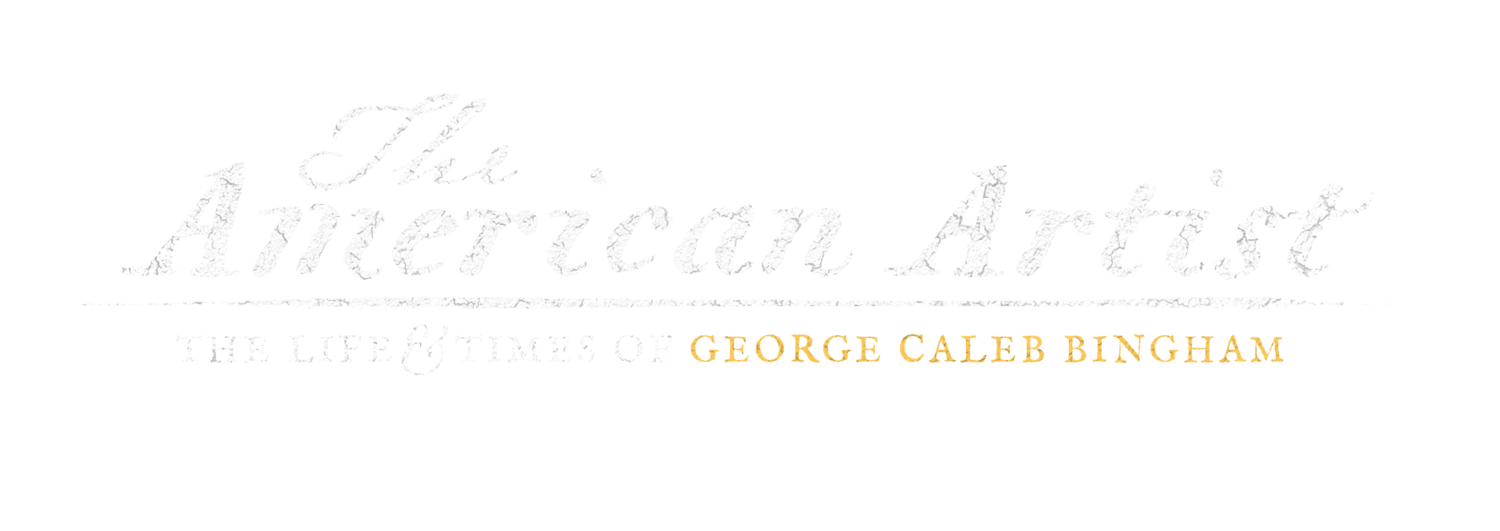As part of the making of The American Artist: The Life & Times of George Caleb Bingham, we had the pleasure — and challenge — of filming at The Metropolitan Museum of Art in New York.
The Met, as it’s called, recently featured the exhibit, Navigating the West, George Caleb Bingham and The River, and this gave our production team a fantastic opportunity to not only feature Bingham’s work in a museum setting, but also to speak with a world-renown American art curator to gain a deeper understanding of the place that Bingham holds in the fine art world.
Arrival in NYC
Our production team flew into New York in September 2015 near the end of the exhibit’s well-received run at The Met. (Here’s a warm review of the exhibit from The New York Times.)
It was a busy time in New York, even by the standards of The City That Never Sleeps: The US Open tennis championships were wrapping up, Fashion Week was in full swing and there were several events taking place at the United Nations. Of course, all this activity drove up the price of even modest hotel rooms up to $900 per night. But then again, part of the fun of visiting NYC is complaining about the cost of everything, isn’t it?
What’s more, our filming at The Met took place on Sept. 11. Everywhere in the city we saw wreaths and memorials. Naturally, emotions around the anniversary were palpable.
The Art of Filming Art
In addition to filming the Navigating the West exhibit, we’re were also scheduled to interview curator Betsy Kornhauser. Kornhauser is the Alice Brown Pratt Curator of American Paintings and Sculpture, and a specialist in regionalist painters including Bingham.
We intended both the filming of the exhibit and our Kornhauser interview to be key pieces of the documentary. With limited time and access to such a public, hallowed place, we made sure we had a clear production plan in place but one that remained fluid enough so that we could react and change course as needed.
Sure enough, our interview with Kornhauser started of with an unexpected hurdle.
When we arrived at the room in The Met where we originally wanted to film the interview, we discovered it filled with nude statues. Now, we’re not prudes and we love art, but from a cinematic standpoint, this would have resulted in us framing Kornhauser with some odd background elements over her shoulder.
Fur Traders Descending The Missouri, 1845. Courtesy The Metropolitan Museum of Art.
Reacting quickly, we instead set up to film our interview with her in front of Bingham’s Fur Traders Descending the Missouri. In the end it turned out to be one of those “happy accidents” that was actually more fitting for the project than what we had initially planned.
That other half of our production assignment at The Met - filming the Bingham exhibit - turned out just as beautifully but also not without its problems to solve.
From the early stages of planning our shoot at The Met, it was our intention to only show Bingham’s original paintings hanging within the exhibit and filmed in 4K rather than dropping post-production digital scans of the paintings into the film. This was important to our film because the originals have such a luminance to them. They respond so amazingly to the light in the room that digital scans wouldn’t do Bingham’s work justice.
““If you care about art, you should care about this artist. Because we do.””
Of course, the logistics of filming fine art can be daunting. Lighting and creative framing are big challenges and so too is composition. That is, we didn’t want to show in the background any work that we hadn’t cleared the rights to for using in our film. This last issue alone makes arranging permission to film in a major art institution a subject large enough for a whole other blog post.
Interestingly, one of the biggest challenges of filming fine art has nothing at all to do with lighting or cameras or composition or rights clearances—it’s the procedures you must, understandably, observe while working around the art.
Before shooting, our crew was educated on how to walk around paintings. For instance, if you bend over to pick up something, you must take a few steps back before rising back up. Otherwise you just might knock a priceless painting off the wall.
As part of our trip, we were also treated to the amazing experience of touring the underbelly of The Met. Everywhere in the basement storage area you find signs with the unusual warning, “Yield for Art.” This makes sense when you consider that the traffic through that area involves works of art so valuable, you’d rather crash a Ferrari than damage something stored there.
Luckily we managed to get out of the place without damaging any priceless works of art AND get our informative interview with Kornhauser AND capture some stunning footage of Bingham’s artwork.
The Importance of This Shoot
From the very beginning we believed the point of view of the respected “east coast art establishment” would be important to the resonance of our film, pre-empting anyone unfamiliar with Bingham who might reflexively dismiss him as “just a regional artist.”
Maybe we have Midwestern chip on our shoulder, but it’s not a stretch to say that many people on both coasts might be disinclined to take seriously a 19th century painter who lived and worked in Missouri.
So if nothing else it lends credence to Bingham and his legacy when our film has respected fine art curators at major institutions in cities like New York say, essentially, “If you care about art, you should care about this artist. Because we do.”
To learn more about Bingham and for updates about the documentary, The American Artist: The Life & Times of George Caleb Bingham, due in 2016, please join our mail list.

